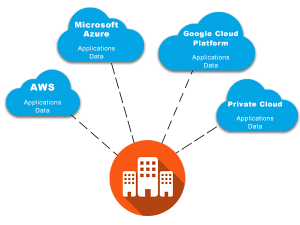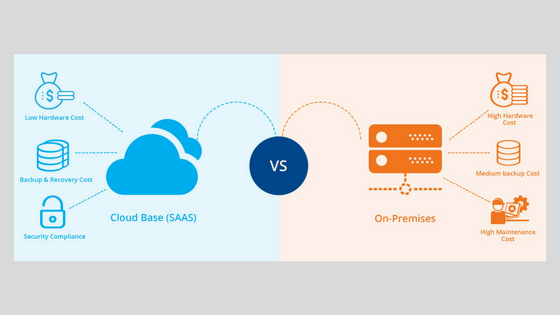By Des Nnochiri
When it comes to hosting applications, business and IT administrators often need to make tough decisions as to whether cloud hosting or retention of the software at their own data center is the preferred option. Public cloud hosting may have the edge in terms of scale and distribution, but there are certain instances where an onsite approach to application hosting is a better idea.
The Business Argument for the Data Center
From a strategic perspective, technology has evolved to the point where business users can now host their workloads and applications in a manner and location where the maximum benefit is available, in terms of performance, cost, and security. So in cases where cloud hosting may impose unacceptable limitations, a physical data center could be the best place to host one or more applications.
The Economic Case for “Cloud Repatriation”
The official buzzword for moving business applications and processes from the cloud back to the data center is cloud repatriation. In terms of finance, this approach can assist businesses that suffer from the recurring expenditure associated with public cloud hosting. These costs are typically due to the running of a cloud service and can build up to appreciable levels over the course of two or three years. They can add significantly to the total cost of ownership (TCO) of an enterprise cloud deployment.

Cost is generally the main reason for shifting cloud applications back to the data center. The cost of using public cloud services has been on the rise. Meanwhile, cutting edge technologies and equipment have been decreasing in price, in line with a competitive market. This has led many organizations to consider alternatives such as storage-class memory, hyperconvergence, and software-defined networks (SDN).
Hosting Applications Onsite for Greater Control
While hosting applications in the cloud can make them more accessible to a wide user base, maintenance and fine-tuning of the software can become a problem for the enterprise. So moving applications back to the data center can enable in-house IT teams and business managers to enjoy greater control and oversight.
Heavily-used applications which don’t require much in the way of interactivity or internet access for their functionality are ideal candidates for onsite hosting. Applications such as data mining tools, which require access to large amounts of static information can also benefit from a move back to the data center.
Some organizations rely on public cloud hosting as a testing ground for new applications. Once these have been properly stabilized, it’s often desirable for them to be brought back under the corporate umbrella.
Looking for Improved Performance
Multi-tenant public cloud environments have a reputation for suffering performance hits due to infrastructure overload or glitches in individual accounts that affect other users sharing the cloud space. Applications which are sensitive to time lags or latency are particularly vulnerable, as are installations with datasets which are large and require transport between various locations or have long-lasting and intensive periods of input or output.
Businesses may be better served by hosting applications in-house if these workloads demand high performance, a high level of integration with other enterprise software and processes, or a large degree of customization.
The Issue of Security
There’s a well-established fear of public cloud among business IT users due to the lack of visibility and trust associated with leaving corporate data in the hands of a third party. Though public cloud services may make serious attempts to guarantee the security of their clients’ information and software, hosting sensitive applications and files at the company data center is generally seen as the preferred option.
With a data center physically connected to the company’s local network, security and IT managers have greater confidence that vital information and applications will remain accessible only to those with the appropriate credentials, user privileges, and authorization.
Data Governance and Compliance
Similarly, greater oversight and granular control over data and workloads is possible with the onsite hosting of any applications and business processes that need to meet regulatory requirements. With cloud service providers often having their infrastructure spread over numerous geographically-dispersed locations, organizations needing to meet the demands of compliance regimes like GDPR see local hosting of their applications and data as a safer bet—especially in light of the kinds of stiff penalties resulting from non-compliance.
Some Points to Consider
Cloud repatriation![]() won’t happen without consequences. The following points should be borne in mind:
won’t happen without consequences. The following points should be borne in mind:

A data center may be more expensive than you think. With estimates of the order of $10 million to $25 million per year, the costs of building up and maintaining onsite infrastructure can be prohibitive![]() . Leasing, co-location (bring your own hardware, but use the bandwidth, electricity, space, and technical staff of the facility), or data center management services may be options worth looking into.
. Leasing, co-location (bring your own hardware, but use the bandwidth, electricity, space, and technical staff of the facility), or data center management services may be options worth looking into.
Multi-cloud may be an option. Distributing applications, data, and other assets across several cloud hosting environments may offer a more cost-effective solution in terms of performance, availability, or redundancy.
Leaving the cloud may not be so easy or cheap. Cloud vendors typically try to lock in their clients with long-term contracts that may impose fines for early termination.
Onsite hosting will require a technical shift. Your IT teams will need to make adjustments to existing operations and infrastructure to accommodate the new applications being brought in. Particular attention will have to be paid to managing all the interconnections existing between applications, data, and the internet. This will take time, effort, and money.
Final Thoughts
Ultimately, whether or not to make the switch from hosting your applications in the cloud to your on-premises data center is a decision which must be weighed in light of these considerations and the particular needs and circumstances of your business.
